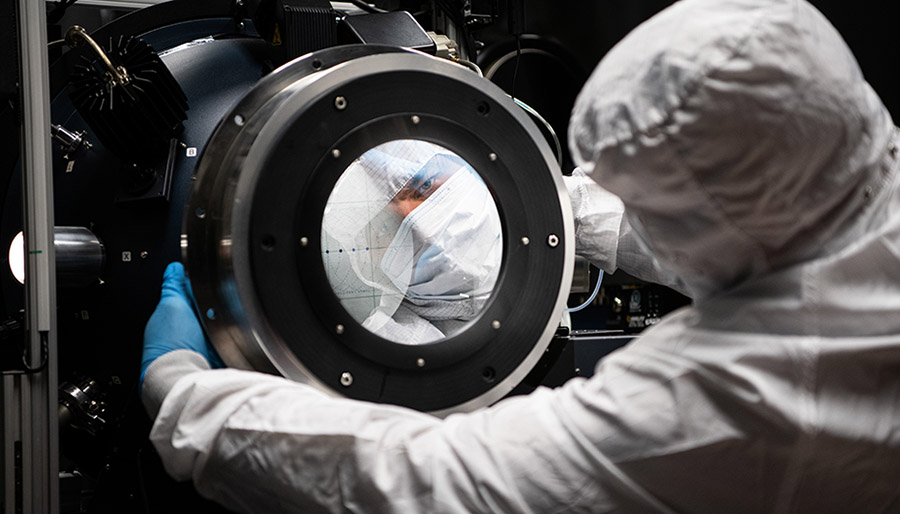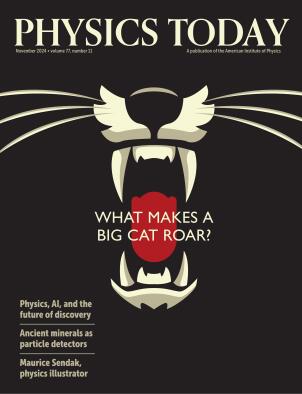NASA urged to boost R&D at expense of near-term missions
DOI: 10.1063/pt.eagp.uksf

An engineer adjusts equipment at NASA’s Goddard Space Flight Center. Credit: Denny Henry/NASA

This article is adapted from a 12 September
NASA’s long-term success requires the space agency to invest in R&D, scientists, and infrastructure, even at the expense of initiating new missions, says a new report
Released on 10 September, the report concludes that “to avoid a hollow future” for the agency and to keep up with increasing international competition, particularly from China, NASA must rebalance its priorities—even if that means making some difficult choices. “In an opportunity-rich environment, such as NASA has confronted over the years, the choice has too frequently been to pursue near-term missions at the expense of investing in the ostensibly invisible foundational assets of the organization,” the report states. “The inevitable consequence of such a strategy is to erode those essential capabilities that led to the organization’s greatness in the first place.”
Insufficient funding and uncertainty surrounding NASA’s long-term budget are highlighted in the report as “often incompatible with the scope, complexity, and difficulty” of the agency’s work. The report notes that in recent years, NASA’s missions budget as a percentage of its total budget has increased from 79% to 85%, whereas its budget for activities that support multiple missions, such as developing new technologies, has decreased from 20% to 14%. The result is that “each dollar of mission support that previously had to sustain a dollar of mission activity now has to support $1.50 of mission activity, effectively a 50 percent increase.” The report recommends that NASA “aggressively increase investment in internal research and development to advance early-stage, future mission critical technologies that are not commercially available.”
The report highlights that NASA faces competition for scientists and engineers from the private sector, which frequently offers better pay, benefits, and work flexibility. The growth of the space economy also means that NASA is no longer the only employer offering “challenging hands-on work in the field of space exploration,” the report says.
The report also recommends that NASA grow its in-house technical competencies by avoiding outsourcing early-stage activities to contractors. “The nation cannot afford to have NASA just become a funding agency for industry,” said Lester Lyles, a report committee member and chair of the NASA Advisory Council, during a 10 September webinar
Aging infrastructure is becoming a major issue for NASA, as it is for other science agencies, including the Department of Energy
“The bottom line of all this, I think, would be to say that, for NASA, this is not a time for business as usual,” said Norm Augustine, report committee chair and former Lockheed Martin CEO, during the webinar. “The concerns it faces are ones that have built up over decades. And NASA truly is, in our view, at a crossroads.”
This article was originally published online on 18 September 2024.
